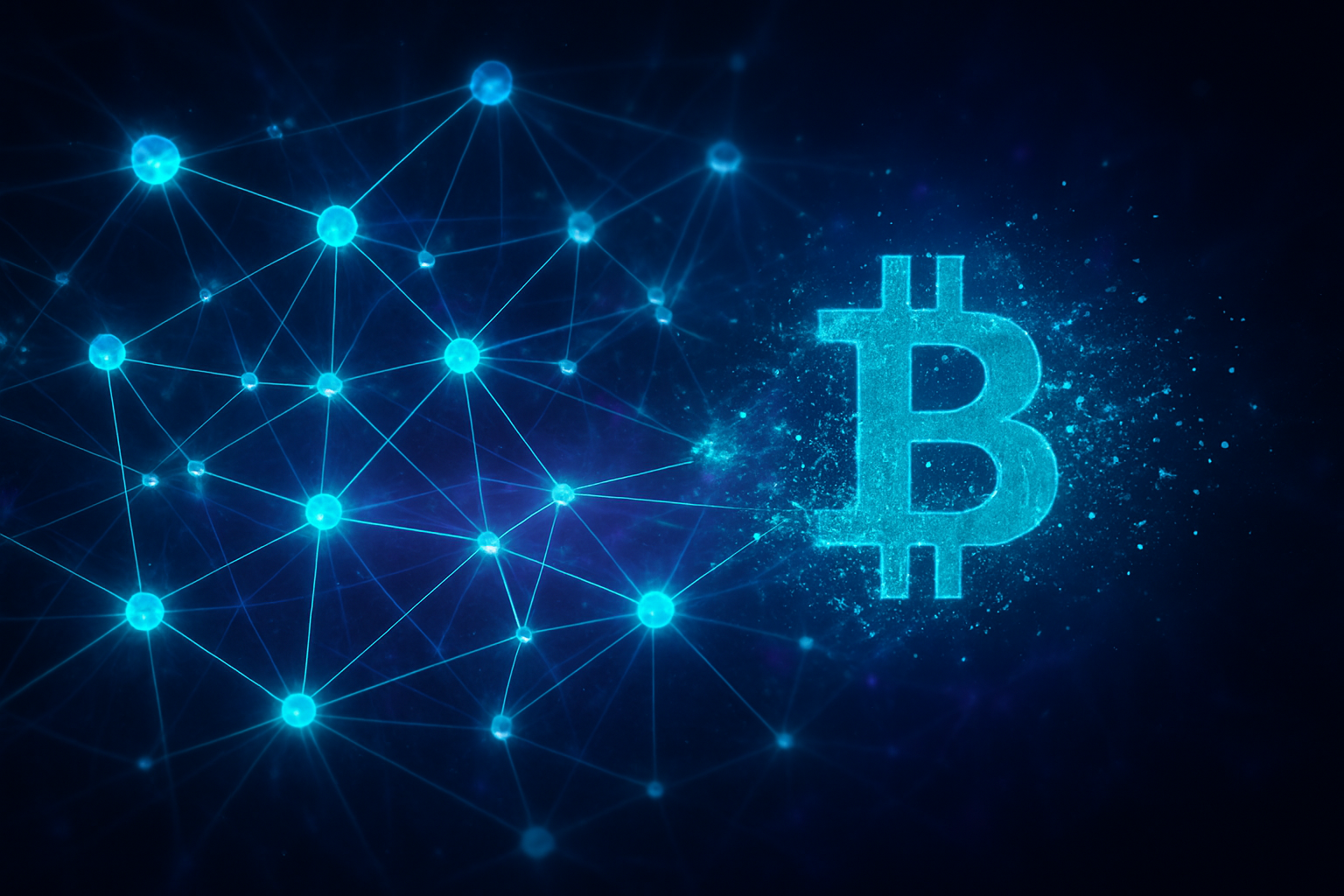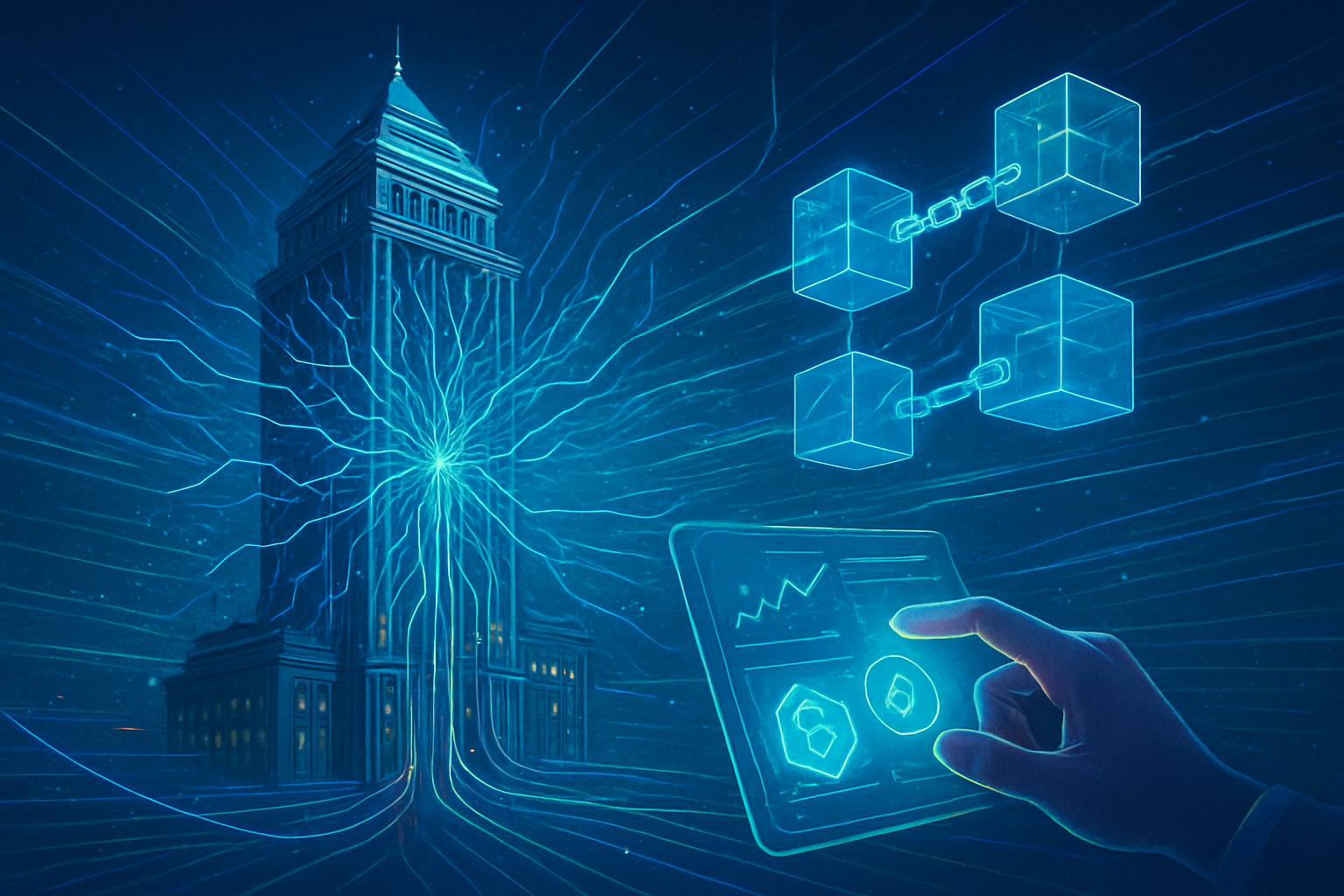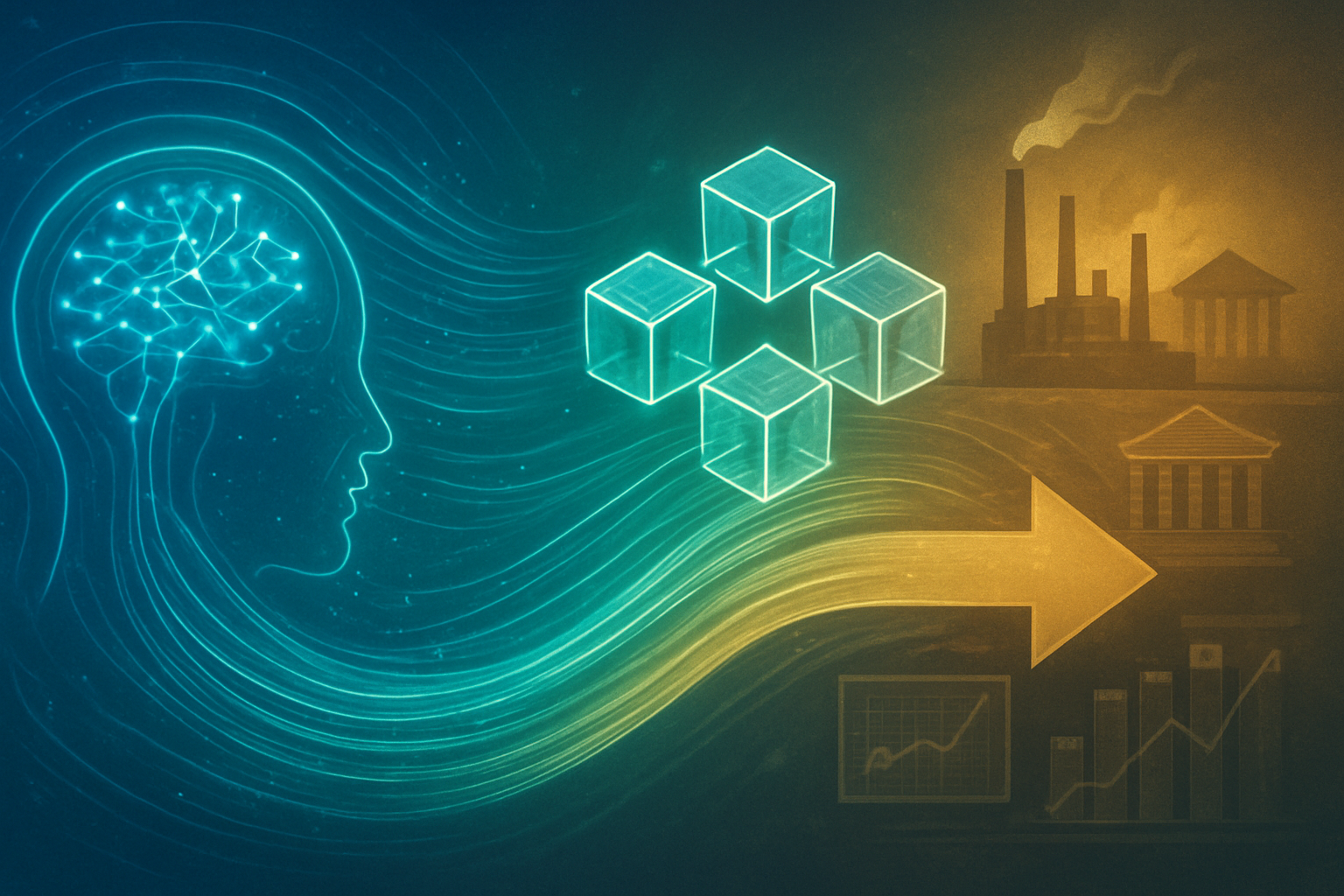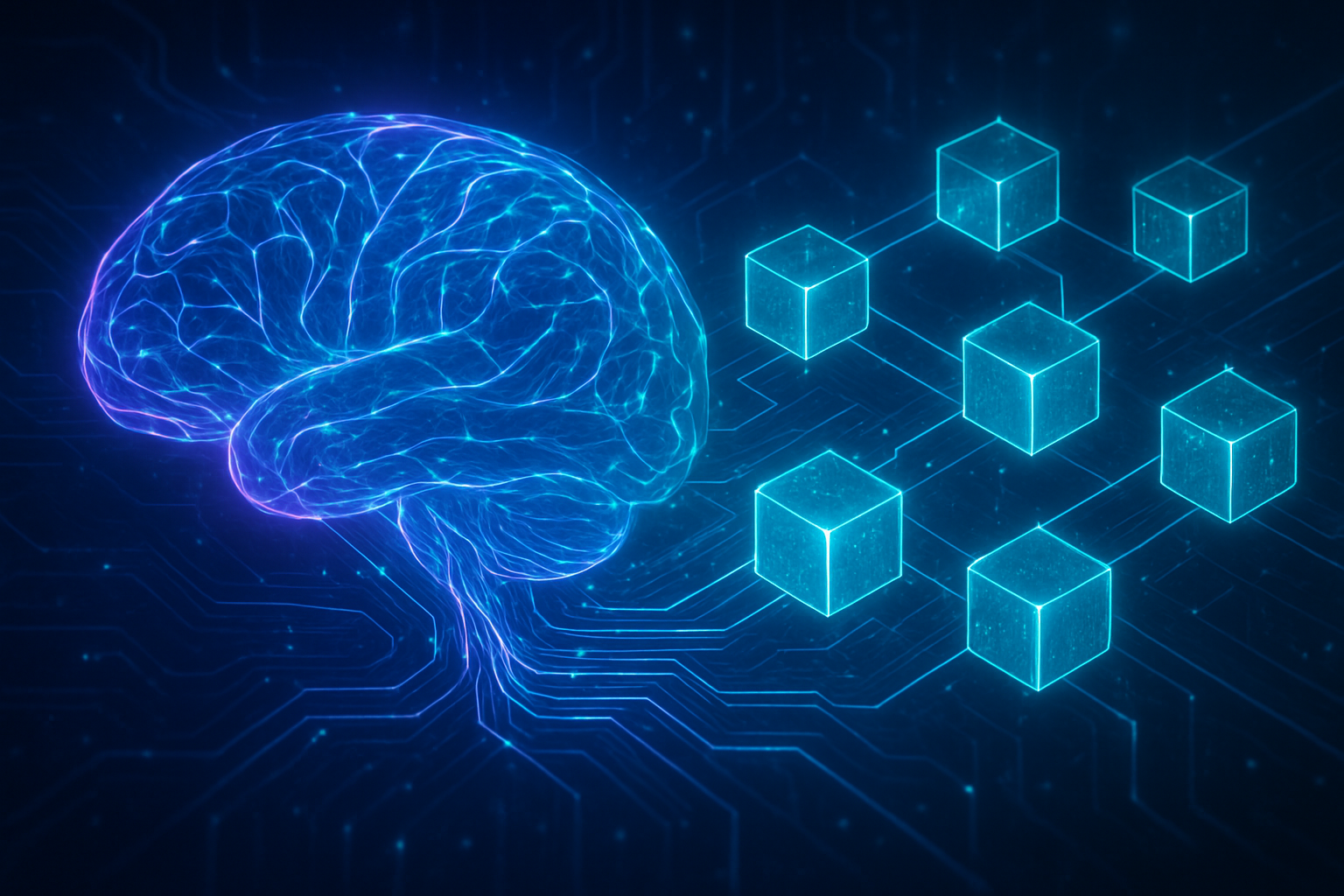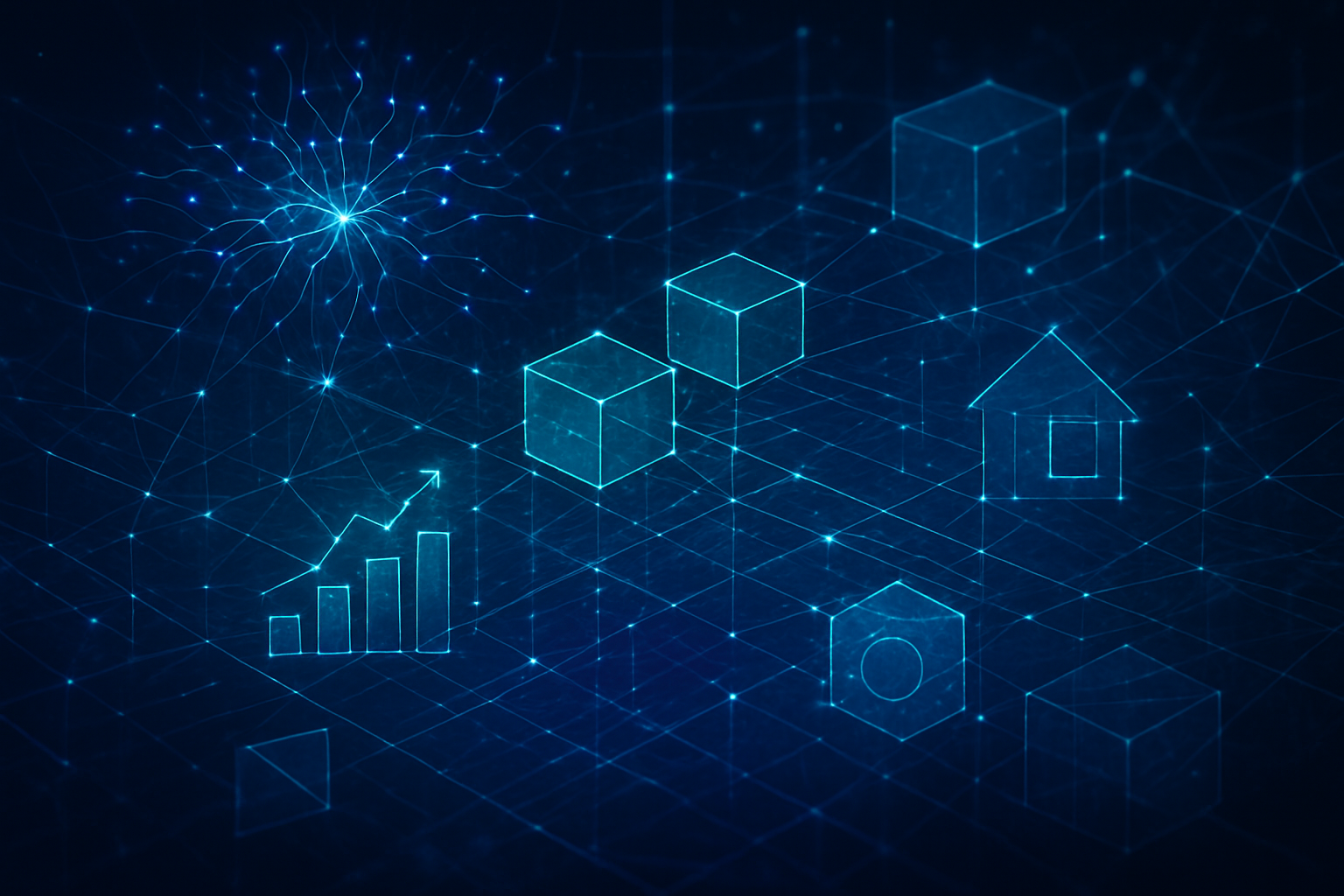The financial world is in the midst of a profound revolution, venturing far beyond the familiar confines of traditional stocks and bonds. As of late 2025, a powerful confluence of macroeconomic shifts, a relentless pursuit of diversification, and an insatiable demand for higher, uncorrelated returns is propelling investors into new and exciting territories. This paradigm shift is largely characterized by the burgeoning growth of alternative assets, the disruptive potential of decentralized finance (DeFi), and the pervasive integration of innovative financial technologies (FinTech), fundamentally reshaping how capital is allocated and managed globally. This transformative era promises not only novel avenues for wealth creation but also a democratized financial ecosystem, offering unprecedented access to opportunities once reserved for institutional titans.
This seismic recalibration of financial markets signifies a fundamental re-evaluation of risk, reward, and liquidity. Investors, both institutional and individual, are increasingly seeking to diversify their portfolios and tap into unique growth prospects that lie outside conventional public markets. The immediate significance of these emerging sectors cannot be overstated; they represent a bold leap towards a more inclusive, efficient, and transparent financial landscape, challenging established norms and setting the stage for the next generation of investment strategies.
The Digital Renaissance: Dissecting the Mechanics of New Financial Frontiers
The landscape of investment is being redrawn by three interconnected forces: the expansion of alternative assets, the rise of decentralized finance, and the relentless innovation within financial technology. Each offers distinct mechanisms and opportunities, diverging significantly from the traditional equity and fixed-income models.
Alternative Assets: Diversifying Beyond Public Markets
Alternative assets encompass a broad spectrum of investments that fall outside traditional stocks, bonds, and cash. Historically the exclusive domain of institutional players, these assets are now increasingly accessible to individual investors. The global assets under management in alternatives surged from approximately $7 trillion in 2014 to an impressive $18 trillion in 2024, with projections aiming for nearly $29 trillion by 2029. This growth underscores a widespread recognition of their value in portfolio diversification and potential for enhanced returns. Key categories include:
- Private Equity and Venture Capital: Investors directly fund private companies, including startups and early-stage businesses, before they go public, seeking substantial gains from their growth. This differs from public market investments by offering direct exposure to innovation and growth at an earlier stage.
- Real Estate (Private Credit and Alternative Investments): Beyond direct property ownership, there's a significant trend towards real estate private credit, valued for stable and uncorrelated returns. Fractional ownership of property through blockchain-based tokenization is also emerging, enhancing liquidity and accessibility by allowing investors to own a share of a physical asset without the full capital commitment.
- Commodities: While traditional commodities like gold and oil remain, there's a rising interest in rare earth elements, driven by geopolitical factors and demand from the clean energy transition. These offer high-risk, potentially high-reward opportunities distinct from broad market movements.
- Collectibles and Cultural Assets: "Passion portfolios" are gaining traction, with investments in fine art, vintage cars, rare coins, and even digital art (NFTs). Platforms are emerging to fractionalize ownership, making these unique, often illiquid assets more accessible and providing a non-traditional hedge against inflation.
- Private Credit: Filling the void left by banks under increasing regulation, private lenders are funding middle-market businesses, real estate projects, and asset-backed loans, often yielding double-digit returns that are less correlated with public debt markets.
Decentralized Finance (DeFi): Reshaping Financial Systems
DeFi represents a paradigm shift, leveraging blockchain technology, primarily Ethereum, to offer financial services without central intermediaries. Its goal is to democratize finance, providing open, transparent, and globally accessible services. The global DeFi market is projected to reach $351.8 billion by 2031, growing at a CAGR of approximately 49%. This differs fundamentally from traditional finance by removing banks and other intermediaries, enabling peer-to-peer transactions and automated protocols.
- Lending and Borrowing: Users can lend digital assets to earn interest and borrow against cryptocurrency collateral, all without traditional credit checks or centralized approval processes.
- Decentralized Exchanges (DEXs) and Automated Market Makers (AMMs): DEXs facilitate direct peer-to-peer cryptocurrency trading, often using AMMs to provide liquidity, bypassing centralized exchanges and their associated fees and control.
- Staking and Yield Farming: Investors earn passive income by "staking" their cryptocurrency to secure blockchain networks or by "yield farming," providing liquidity to DeFi protocols in exchange for rewards. This offers new forms of passive income generation directly tied to blockchain network operations.
- Real-World Asset (RWA) Tokenization: This crucial trend bridges DeFi with traditional finance by tokenizing physical assets (e.g., real estate, gold, bonds) on the blockchain. This brings increased liquidity to traditional markets and enables fractional ownership, allowing a wider pool of investors to access historically illiquid assets.
- Cross-Chain Interoperability: Solutions like cross-chain bridges are being developed to enable seamless asset transfers between different blockchain networks, addressing the siloed nature of early DeFi and expanding its potential applications.
Innovative Financial Technologies (FinTech): The Digital Future of Finance
FinTech encompasses technological innovations that are transforming the financial sector, including new business models, applications, processes, and products. Investments in FinTech companies totaled $865 billion between 2019 and 2023, more than double the amount from the preceding five years. This differs from traditional financial services by leveraging cutting-edge technology to automate, personalize, and streamline financial operations.
- Artificial Intelligence (AI) and Machine Learning (ML): AI is a primary driver, enhancing decision-making, personalizing customer experiences, and improving fraud detection. AI agents are moving beyond simple chatbots to perform complex tasks like transaction reconciliation and portfolio management, while robo-advisors democratize access to personalized financial advice. Predictive analytics, powered by AI, offers real-time market trend forecasting and risk assessment, a significant leap from traditional, human-intensive analysis.
- Blockchain Applications Beyond DeFi: Beyond its role in DeFi, blockchain technology is improving transparency, security, and efficiency across broader financial transactions, from supply chain tracking to insurance claims, offering an immutable and distributed ledger for various financial processes.
- Tokenization of Assets: This involves representing ownership of real-world assets like real estate, art, bonds, and securities on a blockchain. The market for tokenized assets surged to $25 billion in 2025, enabling fractional ownership, increased liquidity, and streamlined institutional trading, fundamentally changing how assets are owned and traded.
- Digital Banking and Neo-Banks: These digital-first institutions offer fully app-based experiences, instant onboarding, and integrated financial services, contrasting sharply with the often-cumbersome processes of traditional brick-and-mortar banks.
- Embedded Finance: Financial services are seamlessly integrated into daily experiences, such as in-app payments and point-of-need lending, making financial transactions invisible and intuitive, a stark departure from dedicated financial interactions.
Initial reactions from the financial research community and industry experts highlight both immense opportunity and significant challenges. While the potential for enhanced returns, diversification, and financial inclusion is widely acknowledged, concerns regarding regulatory clarity, smart contract vulnerabilities in DeFi, and the inherent illiquidity of some alternative assets are frequently raised. Experts agree that these innovations represent a fundamental, irreversible shift, demanding new frameworks for risk assessment and due diligence.
Shifting Sands: How New Financial Frontiers are Reshaping Corporate Fortunes
The emergence of alternative assets, decentralized finance (DeFi), and innovative financial technologies is fundamentally altering the competitive landscape, creating both unprecedented opportunities and existential challenges for traditional financial institutions, agile FinTech companies, and ambitious startups. This dynamic environment is forcing a strategic re-evaluation across the entire industry.
Traditional financial institutions, long the gatekeepers of capital, are facing intense pressure from the disintermediating forces of DeFi and the efficiency of FinTech. DeFi, through its peer-to-peer, smart-contract-driven transactions, directly challenges banks' roles in lending, borrowing, and payments, promising lower costs and greater efficiency. Similarly, FinTech innovations like mobile payment apps, digital wallets, and robo-advisors offer faster, more convenient, and often more cost-effective alternatives, intensifying competition. To survive and thrive, established players like JPMorgan Chase (NYSE: JPM) and BNY Mellon (NYSE: BK) are compelled to undergo significant digital transformations, investing heavily in new technologies, forging strategic partnerships with FinTech firms, and actively exploring blockchain-based solutions for custody, trading, and advisory services for digital assets. Some traditional asset managers are also aggressively expanding into alternative assets, recognizing the shift in investor demand.
FinTech companies are at the vanguard of this revolution, experiencing rapid growth and expanding market share. They leverage cutting-edge technologies like AI, blockchain, and big data to offer digital-first models, personalized services, and alternative financial products. Companies such as Coinbase Global, Inc. (NASDAQ: COIN), a leading platform for digital asset trading and custody, and Circle Internet Financial, LLC, the issuer of the USDC stablecoin, are directly benefiting from the surge in digital asset adoption. FinTechs often boast lower operational costs due to their digital-only nature and automation, allowing them to offer more competitive fees and interest rates. While they face challenges in navigating complex regulatory landscapes, strategic partnerships with traditional banks are increasingly common, shifting the dynamic from pure competition to collaborative innovation.
Startups, particularly those focused on blockchain, AI, and niche financial services, are both beneficiaries and active contributors to this evolving ecosystem. Alternative investments, such as venture capital funds specializing in early-stage companies, provide crucial funding for high-potential, high-risk ventures that might struggle with traditional bank loans. Startups are developing agile, cheaper, and more accessible solutions, from innovative payment firms and digital banks (neobanks) to companies focusing on payment-infrastructure-as-a-service (PIaaS) and embedded finance. However, the influx of institutional money into the crypto space and the increasing presence of well-funded FinTechs mean fiercer competition for smaller players. Nimble startups are differentiating themselves by focusing on niche markets, leveraging regulatory sandboxes, and adopting DeFi tools for treasury management and yield generation.
The competitive implications are profound: intensified innovation, a shift from gatekeepers to collaborators, and an imperative for differentiation. Companies that can effectively leverage data and AI to personalize products, improve risk management, and enhance operational efficiency will gain a significant competitive edge. The real disruption lies in the fundamental shift of who controls financial infrastructure and how value is transferred, moving towards more transparent, accessible, and programmable systems built on blockchain. The tokenization of real-world assets (RWAs) is a particularly potent disruption, with platforms like Securitize, Inc. already tokenizing billions in assets, including funds from major investment managers like BlackRock (NYSE: BLK) and KKR & Co. Inc. (NYSE: KKR), opening up massive market opportunities and enabling secondary market liquidity for previously illiquid assets.
A New Era of Finance: Broader Implications and Looming Challenges
The rise of alternative assets, decentralized finance (DeFi), and innovative financial technologies signifies a fundamental reshaping of the global financial landscape, moving beyond incremental improvements to a systemic transformation. This evolution carries profound implications for efficiency, accessibility, and transparency, while simultaneously introducing a new set of complex challenges.
One of the most significant impacts is the increased efficiency and lower costs across financial processes. DeFi, with its decentralized networks and smart contracts, bypasses traditional intermediaries, leading to faster and cheaper transactions. Similarly, FinTech innovations, from mobile payment systems to peer-to-peer (P2P) lending, streamline operations and reduce overheads. This efficiency directly translates to enhanced accessibility and financial inclusion. DeFi platforms are permissionless and globally accessible to anyone with an internet connection, breaking down geographical and socioeconomic barriers that have historically excluded vast populations from traditional banking. FinTech has been instrumental in extending financial services to underserved communities, particularly in developing markets, fostering greater equity in access to capital and financial tools.
Furthermore, blockchain technology, the backbone of DeFi, offers unparalleled transparency and innovation. Every transaction is permanently logged on a public, verifiable ledger, significantly reducing fraud and corruption risks. This transparency, coupled with the open-source nature of many DeFi protocols, has spurred a wave of financial innovation, leading to novel products like decentralized exchanges (DEXs), yield farming, and synthetic assets. FinTech, in turn, has introduced advancements such as robo-advisors, crowdfunding platforms, and the tokenization of real-world assets (RWAs), transforming ownership of assets like real estate or equities into digital tokens on a blockchain. This inherent transparency and drive for innovation stand in stark contrast to the often opaque and centralized nature of traditional financial systems.
However, this transformative period is not without its perils. A primary concern is regulatory uncertainty and arbitrage. The rapid pace of innovation frequently outstrips the ability of existing regulatory frameworks to adapt, creating a patchwork of rules across jurisdictions. This ambiguity can lead to vulnerabilities, potential for regulatory arbitrage, and challenges in ensuring consumer protection and financial stability. The digital nature of these new avenues also increases security risks and cyber threats. Smart contract vulnerabilities in DeFi, in particular, pose a significant risk, as flaws in code can lead to substantial financial losses, as evidenced by numerous past exploits. Moreover, the inherent market volatility and liquidity risks associated with cryptocurrencies and nascent DeFi markets, combined with the potential for "runs" on stablecoins and high leverage within the crypto ecosystem, could amplify systemic risks and spillover effects into the broader financial system.
Comparing this era to previous financial milestones reveals both parallels and distinctions. Like the emergence of junk bonds in the 1980s or the dot-com bubble of the late 1990s, the current wave is met with a mix of excitement and skepticism, often followed by periods of market adjustments and increased regulatory scrutiny. However, the current democratization of alternative investments and the fundamental re-architecting of financial infrastructure through blockchain represent a new phase. While early FinTech developments, such as online banking, paved the way, the radical transformations driven by blockchain and AI are fundamentally "rethinking the financial system's operation" by enabling direct peer-to-peer transactions without traditional gatekeepers.
These developments fit squarely into several overarching trends. There's a clear move towards the democratization and institutional adoption of alternative and digital assets, with major players like BlackRock (NYSE: BLK), JPMorgan Chase (NYSE: JPM), and Fidelity Investments actively exploring and investing in these spaces. This signals a future of convergence and hybrid models, where the strengths of DeFi (automation, transparency) merge with the stability and regulatory oversight of traditional finance. The tokenization of real-world assets (RWAs) is rapidly gaining traction, offering unprecedented liquidity and fractional ownership. Furthermore, embedded finance and open banking, driven by FinTech, are integrating financial services seamlessly into everyday experiences, while AI and ESG integration are becoming critical components of new financial products, promising a more intelligent and sustainable financial future.
The Horizon Ahead: Navigating the Future of Finance
The trajectory of alternative assets, decentralized finance (DeFi), and innovative financial technologies points towards a future of unprecedented transformation, characterized by continuous innovation, increasing integration, and a persistent drive towards greater efficiency and accessibility. Both the near-term and long-term outlooks promise significant shifts, albeit with a clear understanding of the challenges that must be overcome.
In the near term (2025-2027), alternative assets are expected to continue their robust growth, fueled by investor demand for diversification and uncorrelated returns. Private equity, real estate (especially logistics hubs and data centers), and infrastructure investments will remain central. A key trend is the "retailization" of private funds, with regulatory adjustments easing access for individual investors, driven by platforms leveraging tokenization to enable fractional ownership of high-value assets like real estate and fine art. The alternative assets market is projected to reach $24.5 trillion by 2028. DeFi is anticipated to experience a comprehensive recovery and robust development, focusing on enhanced scalability, security, and user-friendly interfaces, with cross-chain interoperability becoming standard. Layer-2 solutions like Arbitrum and Optimism will reduce transaction costs and boost volume, while stablecoins will see increased adoption for enterprise payments. The global DeFi market is projected to hit $42.76 billion by 2025, growing to $178.63 billion by 2029. FinTech, powered by AI and Machine Learning (ML), will see rapid advancements, with over 90% of FinTech companies already leveraging AI. Near-term applications include automated risk assessment, fraud detection, AI-powered chatbots, and optimized investment strategies through robo-advisors. Embedded finance will surge, integrating financial services directly into non-financial platforms, and biometric payment systems are set to become standard for enhanced security.
Looking further into the long term (beyond 2027), the alternative investments market is forecast to reach $24.5 trillion by 2028, with infrastructure and real estate being the fastest-expanding sectors. The democratization of private capital, driven by technology and evolving regulations, will broaden access to these assets. AI and ML will revolutionize back and middle-office functions for alternative asset managers, enhancing efficiency and data analysis. DeFi is expected to become an important component of the global financial system, with regulatory integration attracting institutional investors and real-world asset (RWA) tokenization becoming a significant trend, bringing traditional assets like equities and bonds onto blockchain platforms. Hybrid models combining DeFi and Centralized Finance (CeFi) are anticipated, with traditional banks and exchanges integrating DeFi services. FinTech will see business model reinventions driven by seven key technologies: AI, Blockchain, Cloud Computing, IoT, Open Source/SaaS/Serverless, No-code/Low-code, and Hyperautomation. AI alone is projected to generate up to $1 trillion in additional value for the global banking industry annually. The Internet of Things (IoT) in FinTech will reach $1.56 trillion by 2029, with applications in smart payments and data-driven risk management, while quantum computing looms on the horizon, promising to revolutionize risk modeling and fraud detection.
Potential applications and use cases are vast and transformative. For alternative assets, fractional ownership through tokenization will democratize access to high-value assets, while institutional investors will continue to increase allocations for diversification and enhanced returns. DeFi will see the proliferation of decentralized exchanges (DEXs), lending and borrowing protocols, decentralized insurance, and yield farming. Real-world asset (RWA) tokenization will bridge traditional and digital finance, enabling fractional ownership and trading of physical assets on DeFi platforms. Furthermore, DeFi will integrate with gaming and the metaverse (GameFi), power prediction markets, and facilitate decentralized derivatives. Innovative FinTech will deliver pervasive AI-driven automation for risk assessment, fraud detection, and personalized investment advice. Embedded finance will seamlessly integrate services like instant "Buy Now, Pay Later" (BNPL) into everyday transactions, while biometric authentication will become standard for secure payments. RegTech will leverage technology to manage compliance, and green banking initiatives will provide real-time carbon footprint tracking and sustainable investment options.
However, significant challenges must be addressed to realize this future. For alternative assets, increased regulatory scrutiny, limited standardization, and persistent liquidity issues remain hurdles. Many processes are still manual, increasing operational risks. For DeFi, standardization of smart contracts, scalability of current blockchain networks, data quality, and regulatory clarity are critical. Security risks, including smart contract vulnerabilities and market volatility, pose existential threats, while consumer protection and user experience need substantial improvement for mainstream adoption. Innovative FinTech faces cybersecurity concerns, regulatory complexity that struggles to keep pace with innovation, and data privacy challenges. The risk of inaction in AI adoption due to regulatory caution could hinder progress, and talent shortages in these specialized technological areas are a continuous concern.
Experts predict an era of AI dominance, where AI and ML will be pervasive, generating massive value in finance. Embedded finance is projected to surge, becoming a pivotal part of digital businesses as consumers demand seamless, integrated experiences. Blockchain and tokenization will continue to disrupt established financial protocols, with RWA tokenization broadening access to financing. DeFi is expected to move beyond a niche to mainstream integration, driven by regulatory clarity and institutional interest, leading to hybrid models. The "retailization" of alternatives will continue, making private markets more accessible. Crucially, there will be a critical need for increasingly sophisticated risk tools, robust cybersecurity defenses, and enhanced regulatory clarity to foster innovation while protecting investors. Cross-chain interoperability is seen as vital for the next wave of DeFi innovation, and green finance solutions will take center stage, driven by ESG regulations and consumer demand.
Charting the Course: A Transformative Era in Financial Markets
The exploration of new avenues in financial markets, extending far beyond traditional stocks, underscores a profound and irreversible transformation underway in the global financial system. The convergence of alternative assets, decentralized finance (DeFi), and innovative financial technologies (FinTech) is not merely a trend but a fundamental re-architecture of how capital is managed, accessed, and valued.
Key Takeaways: Alternative assets offer crucial diversification, potential for higher returns, and inflation protection, moving from institutional exclusivity to broader accessibility. DeFi leverages blockchain for peer-to-peer financial services, promising greater transparency, efficiency, and financial inclusion, with the total value locked across protocols reaching $123.6 billion in 2025. FinTech, powered by AI, ML, and blockchain, streamlines and enhances financial services, empowering underserved populations and driving operational efficiencies. The tokenization of real-world assets (RWAs) is emerging as a critical bridge, seamlessly connecting traditional finance (TradFi) with the burgeoning DeFi ecosystem.
Significance in Financial History: This period marks a generational shift in financial history, challenging established intermediaries and re-architecting financial systems. The democratization of alternative investments and the rise of permissionless, transparent DeFi protocols are fundamentally altering power dynamics and access to financial services. FinTech, by continuously integrating cutting-edge technologies, is accelerating this evolution, enabling faster, cheaper, and more inclusive financial solutions globally. This era mirrors past transformative periods where new technologies challenged established norms and led to revaluations of asset classes, but with an unprecedented scale of decentralization and digital integration.
Long-Term Impact: The long-term impact will be a more diversified and resilient financial landscape. Alternative assets will play an increasingly central role in portfolio construction, offering uncorrelated returns in volatile environments. A hybrid financial future is likely to emerge, where blockchain technology underpins much of global finance, and RWA tokenization unlocks trillions in value, fostering increased market stability and liquidity. FinTech, driven by AI and automation, will continue to enhance financial inclusion and operational efficiency, necessitating traditional institutions to either acquire FinTech capabilities or build robust digital asset divisions. The regulatory landscape will evolve in tandem, striving to balance innovation with systemic risk management and consumer protection.
What to Watch For in the Coming Weeks and Months: Several critical developments bear close observation. Continued regulatory clarity around digital assets, particularly in major economies, will be a significant catalyst for mainstream and institutional adoption, with the success of spot Bitcoin and Ethereum ETFs paving the way for similar products. The relentless growth of Real-World Assets (RWAs) tokenization, especially by major financial institutions, will be a key indicator of TradFi-DeFi convergence. Within DeFi, watch for maturity and improved user experience, including advancements in liquid staking protocols, cross-chain bridging, and user-friendly applications. The accelerating AI integration in FinTech, from personalized products to advanced fraud detection, will reshape customer interactions and back-office operations. Finally, macroeconomic factors and their influence on private markets and digital assets, alongside the increasing emphasis on ESG integration within alternative investments, will continue to shape investor flows and strategic decisions.
This content is intended for informational purposes only and represents analysis of current AI developments.
TokenRing AI delivers enterprise-grade solutions for multi-agent AI workflow orchestration, AI-powered development tools, and seamless remote collaboration platforms.
For more information, visit https://www.tokenring.ai/.


